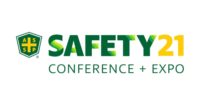What does the future hold for careers in safety and health?

EDITOR'S NOTE: This article was featured on the ISHN website back on May 20, 2000. We thought it would be interesting to present it to you today, some nineteen years later, as a means of comparing the occupational safety and health profession today with the way it was perceived by the people in it nearly two decades ago. Additional note: We've changed the name of the American Society of Safety Engineers to its current moniker, American Society of Safety Professionals, in order to avoid confusion.
Home with a cold, Alan could elaborate on his career musings. (Many safety and health professionals interviewed for this article cannot be fully identified because their private career plans could threaten their current employment.) A 40ish baby boomer, Alan began his career as an industrial hygienist. Now his field responsibilities extend into safety and the environment, and he no longer practices "pure" industrial hygiene- monitoring noise levels and airborne contaminants, designing exposure controls, and the like.
Asked what he sees himself doing in five years, Alan starts by saying he's kicked around the idea of leaving the safety and health profession, possibly to become a science teacher.
"The job is not as much fun as it used to be," he says, citing overly prescriptive regulations that leave little room for professional judgment.
It turns out this is only one of a number of career options he's weighing. Having done some financial planning on the side, almost as a hobby, he's thought about becoming a certified financial planner. "Baby boomers are soon going to panic about this," he says. Some friends have talked of breaking out on their own as safety and health consultants, and he considers joining them. He's also looking into an on-line MBA program. "My time constraints are a nightmare," he explains.
Plus, Alan is showcasing his non-technical talents inside his company with an eye to landing a management job. "I want to have a meeting with the president of our division and explain that I have the ability to manage diverse groups to get better results. I'd like an opportunity to show what I can do."
Alan is one of several dozen safety and health professionals interviewed for this article. The interviews, which often turned into personal conversations, reveal that most professionals these days are wondering about their careers and questioning what kind of jobs they'll have even five years from now. Things are changing that quickly.
Anxious, concerned, and disturbed is how safety manager Jeff Vincoli of McDonnell-Douglas describes the mood of the profession as he travels between local and national meetings of the American Society of Safety Professionals.
This comes as no surprise. Vincoli says only an inept professional wouldn't realize what's going in the 1990s. To summarize: the twin pillars that have supported the safety and health profession for a generation- manufacturing industry jobs and government regulation- are being shaken like never before.
Take smokestack America, the traditional home of most safety managers and industrial hygienists: In the '90s, many of these workplaces are cleaner and safer, thanks to automation. A number have moved overseas. Plus middle managers such as safety and health pros have been laid off in historic numbers. Remaining management jobs have been consolidated; plants that once had a safety engineer, a hygienist, and an environmental specialist now get by with one generalist. A lot of the work can be outsourced. There are accounts of employee committees and teams taking over for safety personnel.
Meanwhile, it's no longer business as usual for OSHA and EPA. Industry responded to their complex rules and surprise inspections by hiring thousands of environmental health and safety pros since the 1970s. But now the agencies are widely seen as beasts of burden, and examples- albeit minor ones- of wasteful government spending. As a result, OSHA and EPA are in the cross-hairs of the conservative majority gunning for regulators in Washington. Says one safety manager: "I'm afraid to pick up a newspaper or magazine to read what will happen next."
These trends naturally affect the market for safety and health jobs. The consequences:
- Jobs are harder to find. At the American Industrial Hygiene Conference in Kansas City this year, 89 positions were posted by employers looking for candidates with 0-10 years experience. Tacked up on bulletin boards were 224 resumes in that category. There were 71 resumes from job seekers with more than 11 years experience, and two openings.
- Job hunting is very competitive. Students graduating with safety and health degrees are savvy, astute, and aggressive, say recruiters. "I see college sophomores joining ASSE and starting to network," says Vincoli. More graduate students are pursuing degrees full-time, trying to get a competitive edge as quickly as possible. During interviews, they want to know, "When can I have your job?" says an industrial hygienist who's been talking to candidates.
- The market is still strong for entry-level positions, say educators and recruiters. Employers like the open minds and fresh ideas young professionals bring, along with their up-to-date computer and technical skills. Plus, the price is right. Industrial Safety & Hygiene News' 1995 salary survey found 36 percent of professionals under the age of 30 make less than $30,000 a year.
- The market tightens up the longer you're in it. "There can be 10 or 12 certified industrial hygienists going for that one vice president's job," says Dan Boatright, Director of the University of Oklahoma's Institute for Environmental Management. A safety and health manager with 14 years experience, laid off last year, has learned some corporate positions are attracting 200-300 applicants. An industrial hygiene director making over $100,000 recently lost his job and faces a 30 percent pay cut to take a similar position in industry, according to a friend.
- There's a tremendous swelling in the consulting ranks. About one-quarter of the 12,000-member American Industrial Hygiene Association is made up of consultants. That figure is expected to grow as industry continues to outsource technical jobs. "It's inevitable," says a safety manager who just refurbished an office in his home, complete with fax and business phone lines, to open up his own consulting business this fall after working several decades in industry.
So what does the future hold for careers in safety and health? The average professional is 43 years old, according to ISHN's salary survey. What will he or she do for the next 20-25 years? And for the several thousand students coming into the field each year, what about the next 40 years?
Career planning in the '90s is an obvious challenge, and this article offers tips and tactics for getting where you want to be.
As you read on, here are ten observations and predictions to consider:
1) Plant-level generalists feel more secure about their jobs than technical specialists, though they do wonder how safety and health issues will reach senior executives if corporate S&H positions continue to be eliminated. The safety manager for a mid-sized steel mill says he's not too worried because he has front-line responsibilities: "I handle it all here- safety, industrial hygiene, environmental. What I don't do I contract out."
2) Safety professionals seem more secure than industrial hygienists. Maybe it's because a number of them have been downsized out of jobs before and bounced back, while hygienists rode a boom in the 1980s and are less accustomed to corporate shock waves. The steel mill safety pro, for instance, lost one job to automation, another in a leverage buy-out. "I've been through this stuff," he says.
There's another factor: Safety jobs often cover more ground than industrial hygiene, which helps in the age of job consolidation. Safety positions posted at this year's ASSE conference in Orlando included these functions: OSHA compliance, training, coaching, accident investigation, fire protection, security, workers' compensation, vehicle safety, lockout-tagout, fall protection, process safety, and behavior-based safety.
Current trends in management thinking also play to safety skills. Consider this job objective taken from the employment center at the ASSE meeting: "To build a positive, high-visibility, proactive safety culture that meets goals and performance measures for continuous improvement."
In contrast, the traditional technical skills of industrial hygienists are increasingly seen as something that can be rented. "I can buy pure industrial hygiene when I need it," says one safety and health manager. The same can be said for indoor air quality and ergonomics expertise- other skills of IHs.
3) Regulatory cops are in trouble. If your boss thinks your job is to keep him out of jail, watch out. It's becoming increasingly obvious that OSHA's reach is not that great, and its fines are pocket change for most companies. Regulatory reports can be written at home- perhaps on a contract basis.
"OSHA hasn't been here since 1989," says a safety manager in a heavy industry plant. "Don't get me wrong, I don't blow off regulations, but it's hard to motivate management to spend money to avoid violations. The real bottom line impact is with loss-time injuries. This June we had an eye injury, a guy got a detached retina. He needed a $10,000 operation and he's still not back at work. It will probably end up being a $20,000 or $30,000 claim. Now that's a big hit."
4) Veteran safety and health pros know they must update skills and management styles. Many are doing just that, taking business courses and avidly reading science, medical, management and psychology books and magazines. But it's easier said than done. There's a proud history of reducing injuries and lowering exposure levels by traditional means. Plus, a number of plant managers still look at safety as "the safety guy's problem."
"My operations manager came in nine months ago and told me safety is to be isolated from quality and manufacturing. He's an ex-police officer, and he told me I will manage safety as an authority. He doesn't want teams, he wants his supervisors telling people what to do," relates one EHS pro.
5) Technical elitism has stranded a number of professionals on an island within their organizations. "They have the attitude, 'Come to me, I'm the expert'," says a former industrial hygienist who's now in operations. "They're isolated, cut off from the mainstream."
"There's a lot of arrogance in our profession," says one safety manager. "It's embarrassing. I've met some certified professionals who don't have a clue. They don't fit in."
6) There's a sense that the infrastructure of the safety and health profession- schools and associations- was built for a bygone era. "I don't do technical safety, honestly," says the corporate safety director for a Fortune 500 company.
"How do you change organizational culture to incorporate environmental health and safety? You need to know traditional psychology, and understand human behavior. You don't learn this from the schools, or the associations. The traditional forums tend to perpetuate the death spiral of the profession."
Says a safety and health official for one of the nation's largest chemical companies: "The safety and health system is not producing the people we want. The technical stuff doesn't make an impact in changing businesses, in integrating safety into businesses." He's filling safety positions with manufacturing types who have strong business and people skills. If it comes down to a choice between someone with that background and a certified safety professional, "It's no competition," he says.
7) In the future, it won't be unusual for safety and health professionals to leave the field behind. As more professionals gain advanced business degrees and learn to think and act as entrepreneurs, career options open up that were not there in the past. Societal restraints are also loosening. There is not the stigma there once was to giving up a career for a new start.
8) Traditional definitions of safety and industrial hygiene will change due to job consolidation and ever-expanding responsibilities. "Where does industrial hygiene end and safety begin anymore?" asks one IH. This blurring of the lines will impact certification criteria and association membership. Already there are calls for associations to merge. At grass roots levels, more professional meetings are jointly sponsored by safety, IH, and occupational health groups.
9) Technical know-how will remain the starting point for careers. Schools, associations, and professionals will use time-saving information technology- online services, video conferencing, CD-ROM training- to fit in the necessary education in non-technical areas such as finance, management, and psychology.
10) There will always be a place in organizations for savvy, articulate professionals who can demonstrate how minimizing risks and improving safety and health performance contributes to quality, production, and profit goals. Here are some of the career options that EHS professionals are pursuing, according to interviews for this report:
Ergonomics: One personnel recruiter reported fairly strong demand earlier this year before OSHA's standard-setting effort ran aground; consultants in the field say the cost of back injuries will keep employers interested in the issue.
Indoor air quality: As gross toxic exposures in traditional manufacturing give way to better process controls, industrial hygienists are finding more work responding to white-collar IAQ complaints. Both ergonomics and IAQ are often employee relations issues that require those much talked-about people skills.
Infection protection: Concern about infectious diseases has spread beyond AIDS- check the crowded seminar rooms when hantavirus is the topic. OSHA is planning to issue rules on tuberculosis protection. And there is increasing publicity about drug-resistant viruses. Public fears are being fanned by recent films and novels. Look for professionals to be called in to investigate isolated incidents, even involving family members of employees.
Wellness: Many companies have dabbled with these programs over the years, some have made serious financial commitments. Employers who truly value their workers- and cost containment- will take a holistic approach to safety and health issues, and EHS pros will be in a position to develop strategies and employee health profiles.
Chemical database editor: Writing and editing material safety data sheets is something tech specialists can do at home.
Safety products distributor technical advisor: Competition is fierce among safety supply houses, and customers are looking for more than good prices. Some distributors are pushing value-added services, which could include at least part-time tech support from CSPs and CIHs. Small and mid-size businesses- auto shops, foundries, metalworking operations- would love help with hazard communication training, respiratory protection, and general safety and health audits.
Environmental due diligence: This is high-stakes team work with pollution experts, attorneys, finance, and quality personnel combining their talents to assess liabilities of potential acquisitions. An excellent opportunity to get to know other sides of the business.
New work environments: More employees are telecommuting from their homes; and for sales people the automobile is becoming a second office. Executives will want to know about the hazards and risks involved with "the new work."
International oversight: Multinational companies will use the latest clean technology overseas because it's more efficient, according to experts, but significant training and health issues with the workforce will demand professional attention.
New directions: A number of EHS professionals interviewed are at least considering complete career changes. Among their ideas: sales and marketing, operations management ("Only the plant manager knows more about a facility's processes than an industrial hygienist," says one IH), real estate, human resources ("A natural transition for a safety professional," says one CSP), educational counseling, quality assurance, teaching (science in particular), general training, personal financial planning, and management information systems.
Here's how one industrial hygienist is positioning himself for a move into non-technical management (since he may or may not succeed, he requested anonymity):
"Frankly, a management opportunity in this company would be a breath of fresh air for me. But I know they're not going to come asking if I'm interested. It's easy to be cast in a technical stereotype. So I've found a job for myself- three or four times I've facilitated incident investigation work teams on an ad hoc basis. It's a showcase for me, honestly. My boss isn't crazy about it, but she knows my ambitions. I'm honest with her. "This is a way to get myself known to the division president. It's not the pure health and safety stuff; it's management oriented, it's getting work done through other people. Next, I want to start a dialog with her (the division president). She is a formidable person. I've gotten to know her casually through work and others. Sometimes I catch her in her office after hours, just stop by and say hello. You know, people in business, even executives, are more accessible these days.
"At some point I want to have a meeting with her to ask what additional responsibilities there are for me in this company. I'd tell her I have the ability to manage diverse groups of people to get better results. I've got to get her to think of me in those terms. Then put me in a place where I have a chance to show what I can do. That's what I'd say. "You know, another important point is that I have a succession plan to fill my current position. You have to back-fill, figure out who's going to take you place, if you're going to ask for a new assignment. You've got to have your current situation under control.
"I don't know whether this is going to work or not. But I've got to try. Sometimes you've got to take a calculated risk and stick your neck out a bit."
Looking for a reprint of this article?
From high-res PDFs to custom plaques, order your copy today!






